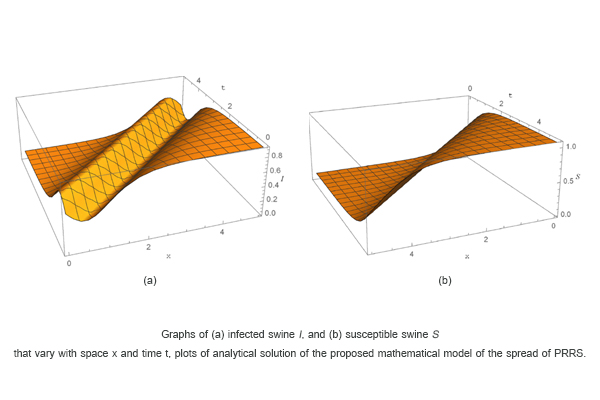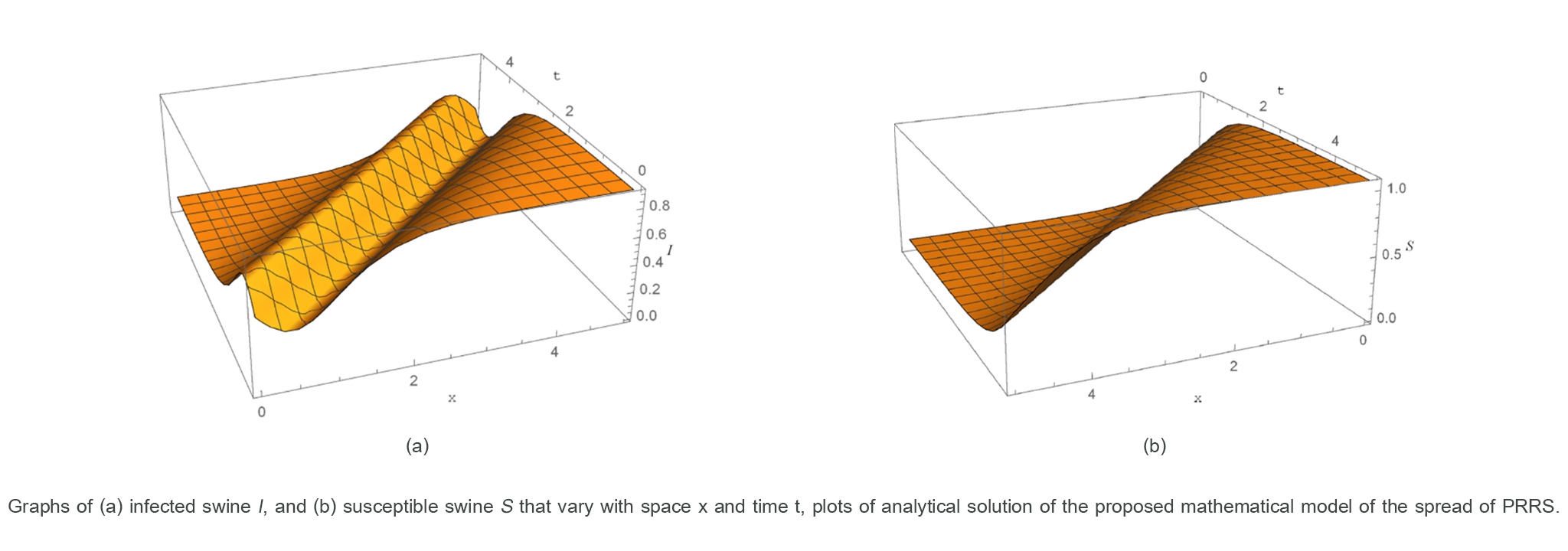Mathematical and Computer Modelling in Animal Farming
Centre of Excellence in Mathematics

Mathematical and Computer Modelling in Animal Farming
Centre of Excellence in Mathematics
Project’s Title :
Swine Farming and Fisheries: Modelling, Control and Machine Vision
Researcher (s) :
1.) Prof.Yongwimon Lenbury (Mahidol University)
2.) Assoc.Prof.Chontita Rattanakul (Mahidol University)
3.) Asst.Prof.Pairote Satiracoo (Mahidol University)
4.) Asst.Prof.Banchar Arnonkijpanich (Khon Kaen University)
5.) Dr.Chanakarn Kiataramkul (King Mongkut’s University of Technology North Bangkok)
6.) Dr.Elvin J. Moore (King Mongkut’s University of Technology North Bangkok)
Direction 1: An Artificial Intelligence Model to Estimate the Fat Addition Ratio for the Mixing Process in the Animal Feed Industry
Additional fat is required when the fat level in the feed ingredients is less than the desired level. The use of suitable fat addition ratios during mixing and after pelleting can improve the pellet quality and the production capability. Since many factors affect the decision of how much fat to add, anticipating the suitable amount of fat addition during the mixing process becomes a heavy task for a mill. This project proposes a model for estimating the amount of fat required in the mixer for each feed formulation. The model is based on the local linear map (LLM) and the back-propagation neural network (BPNN) methods. The model, using data from one of the largest feed mills in Thailand, provides accurate prediction and has been implemented in the mill under study.
Direction 2: Mathematical Modelling and Control Theory in Estimation of Feed Amount for the Optimum Weight of Swine
The amount of food intake obviously affects swine body weight. The most suitable weight of swine on the day of sale is the weight that fetches the best price. The objective of this research was to minimize the amount of food fed to swine in the post weaning period so that the weight reaches a desirable final value on a fixed day of sale. Actual growth data was used to estimate the parameters in the logistic or the Gompertz equations.
Direction 3: Modelling the Spread of Swine Infectious Diseases Such as PRRS
The porcine reproductive and respiratory syndrome (PRRS) can incur high rates of morbidity that could cause severe financial crisis to the countries with swine industries as a whole. This project proposes an appropriate mathematical model that incorporates the declining infectious rate with time. Analysis of the nonlinear model allows us to discover how the delay in incidence rate affects the spread of the disease and whether the number of infected swine may diminish to zero. The control measure of periodic culling or vaccination is modeled by an impulsive model system. The model is also modified into a reaction-diffusion system to simulate the spread of infected swine over both the spatial direction and time.

Applied Research Project to Usage : The proposed model has been implemented in the mill that was studied.
Publishing :
1.) Ittiphlin, M., Arnonkijpanij, B., Pathumnakul, S. An Artificial Intelligence Model to Estimate the Fat Addition Ratio for the Mixing Process in the Animal Feed Industry. J Intell Manuf. 28 (2017) 219–228.
2.) Matkhao, P., Lenbury, Y., Rattanakul, C., Chuchalerm, N. Modeling Porcine Reproductive and Respiratory Syndrome Incorporating Decaying Infectiousness and Delayed Infection Incidences. Southeast-Asian J. of Sciences. 5(1) (2017) 32-46.
3.) Chuchalerm, N., Lenbury, Y., Matkhao, P. Mathematical Modeling of Porcine Reproductive and Respiratory Syndrome Incorporating Decaying Infectiousness and Periodic Inoculation. Southeast-Asian J. of Sciences. 5(1) (2017) 9-21.
4.) Suksamran, J., Lenbury, Y., Satiracoo, P., Rattanakul, C. A model for Porcine Reproductive and Respiratory Syndrome with time dependent infection rate: travelling wave solution, Advances in Difference Equations. (2017) 2017: 215. DOIhttps://doi.org/10.1186/s13662-017-1282-3.
5.) Puengpo, S., Moore, E. J., Kiataramku, C. Application of Continuous and Discrete Optimal Control to Feeding of Farm Animals, Songklanakarin Journal of Science and Technology, In Press.
Key Contact Person :
Prof.Yongwimon Lenbury
Centre of Excellence in Mathematics, Mahidol University
+66 2 201 5335 , +668 9924 3713
scylb@yahoo.com

